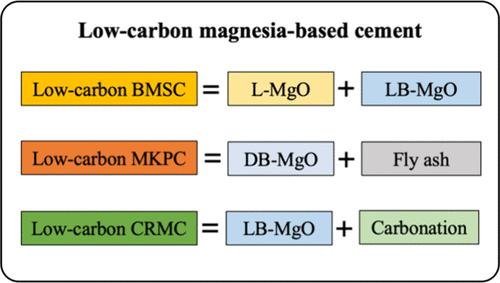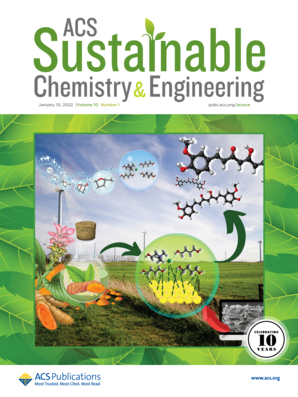Is It Possible to Make Magnesia-Based Cement Environmentally Friendly?
IF 7.1
1区 化学
Q1 CHEMISTRY, MULTIDISCIPLINARY
引用次数: 0
Abstract
Magnesia-based cement is recognized for its outstanding mechanical properties, but its environmental impact has not been thoroughly evaluated. This paper employs a comprehensive life cycle assessment methodology to systematically analyze the environmental effects of four kinds of MgO and 10 kinds of magnesia-based cements based on the data in the literature. The impacts include CO2 emissions, fossil fuel depletion potential, and overall environmental impact indicators. The results indicate that using Salt Lake magnesium residue to prepare MgO, e.g., LB-MgO and DB-MgO, can reduce over 60% of CO2 emissions, compared with traditional MgO (e.g., L-MgO and D-MgO) prepared with magnesite. Utilizing supplementary cementitious materials (e.g., fly ash and ground granulated blast-furnace slag) as substitutes for clinker in basic sulfate magnesium cement (BMSC) and magnesium phosphate potassium cement (MKPC) can also reduce approximately 16 and 45% of carbon emissions, respectively. In addition, carbonation-reactive magnesium cement (CRMC), which involves carbonation curing and replacing traditional MgO with Salt Lake magnesium residue, is the most environmentally friendly magnesia-based cement with an overall environmental impact indicator of 0.00078.

有可能让镁基水泥变得环保吗?
镁基水泥因其出色的机械性能而广受认可,但其对环境的影响尚未得到全面评估。本文根据文献数据,采用综合生命周期评估方法,系统分析了四种氧化镁和十种菱镁基水泥对环境的影响。环境影响包括二氧化碳排放量、化石燃料损耗潜力和总体环境影响指标。结果表明,使用盐湖镁渣制备氧化镁(如 LB-MgO 和 DB-MgO)与使用菱镁矿制备传统氧化镁(如 L-MgO 和 D-MgO)相比,可减少 60% 以上的二氧化碳排放量。在碱性硫酸盐镁水泥(BMSC)和磷酸镁钾水泥(MKPC)中,利用补充胶凝材料(如粉煤灰和磨细高炉矿渣)替代熟料,也可分别减少约 16% 和 45% 的碳排放量。此外,碳化反应镁水泥(CRMC)涉及碳化固化并用盐湖镁渣替代传统氧化镁,是最环保的镁基水泥,其总体环境影响指标为 0.00078。
本文章由计算机程序翻译,如有差异,请以英文原文为准。
求助全文
约1分钟内获得全文
求助全文
来源期刊

ACS Sustainable Chemistry & Engineering
CHEMISTRY, MULTIDISCIPLINARY-ENGINEERING, CHEMICAL
CiteScore
13.80
自引率
4.80%
发文量
1470
审稿时长
1.7 months
期刊介绍:
ACS Sustainable Chemistry & Engineering is a prestigious weekly peer-reviewed scientific journal published by the American Chemical Society. Dedicated to advancing the principles of green chemistry and green engineering, it covers a wide array of research topics including green chemistry, green engineering, biomass, alternative energy, and life cycle assessment.
The journal welcomes submissions in various formats, including Letters, Articles, Features, and Perspectives (Reviews), that address the challenges of sustainability in the chemical enterprise and contribute to the advancement of sustainable practices. Join us in shaping the future of sustainable chemistry and engineering.
 求助内容:
求助内容: 应助结果提醒方式:
应助结果提醒方式:


